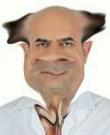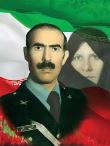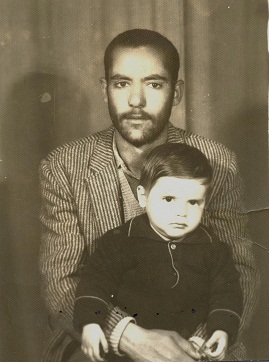


















life of Dr. joseph plumb cochran founder of iran’s first ,contemporary medical college
Esmail Yourdshahian MSc, Farrokh Ghavam MD, Mohhamad-Hassan Ansari PhD
Urmia University of Medical Sciences, Urmia, Iran
• Correspondence: F. Ghavam MD, Department of Pathology, Urmia University of Medical Sciences, Urmia, Iran. Fax: +98-411-2236220, E-mail: fghavampath@yahoo.com.
He came not to be ministered unto, but to minister.
This sentence, taken from the Holy Bible, is engraved on a tombstone in the Assyrian Missionary Cemetery located on top of a hill overlooking the "Seer village" in Urmia, northwest Iran.
Dr. Joseph Plumb Cochran was born on January 14, 1855 and died on August 18, 1905 in Urmia. His father, the Reverend Joseph J. Cochran, and his mother, Deborah Plum, traveled to Iran in 1848 as first-generation American missionaries. They settled in a part of the country that was the homeland of one of the most ancient cultures, Urartu, as well as one of the earliest Christian sects, the Assyrian Church. Very little evidence was to be seen of the region’s rich cultural heritage,
but the Cochrans decided to devote their full missionary zeal to the benefit of the local people, many of whom had remained devout Christians.
Young Joseph, one of eight children, had a happy childhood growing up in a close community of friends, and came to learn local Assyrian, Turkish, Kurdish, English and Persian languages. He left for the USA as a teenager in 1868, visiting American relatives and entering New York Medical College, from which he graduated in 1876 There followed two more years of practical hospital work in surgery, infectious diseases and gynecology. During a trip to Minnesota, he met his future wife, Katharine Hale. The young couple returned to Urmia in 1878 to begin the active life of a missionary doctor and wife.
It did not take very long for young Dr. Cochran and his wife to survey the medical situation and health needs of the local community. A small health clinic, which was part of the Iranian Red Lion and Sun Society, the Iranian counterpart of the Red Cross, was already operational. This was hardly sufficient, however, to meet the needs of the town of Urmia. On Dr. Cochran’s urging, the Board of Assyrian
Missionary purchased a 15-hectare garden to begin the construction of a 100-bed hospital named Westminster, which was completed in a record time of one year and opened its doors in 1879.The basement of the building housed a morgue and a dissecting room, while the upper floor held patient wards, two operating rooms, a drugstore and 10 smaller isolation rooms. What were really needed were more doctors. This problem was solved by Dr. Cochran establishing what can now be called a modern medical school, the first of its kind in Iran. A wooden building including a laboratory was erected near the hospital where the future medical staff was trained.
Remarkably, the original wooden building can still be seen near present day Urmia Medical School, right near a garden. An adjoining maternity hospital was built in due course and soon, needed equipment arrived from the USA.
Despite his other duties, Dr. Cochran accepted the full responsibility for running the medical college. But soon, he was joined by four other doctors who took part in teaching and patient care: Drs. Wright, Homlz, van Nourdon and Miller.
General courses consisted of English and Persian languages, medical law and ethics. Basic medical sciences covered were physiology, anatomy, biochemistry and physics, and clinical sciences were pathology, contagious diseases and gynecology.
Students were required to attend the medical college for 9–10 months per year; however, the college was open around the clock. Students would study theoretically for several hours and spend the rest of their time working in the hospital. At that time, no standardized pharmacology methods had been compiled , and the only sources of drugs were herbs. Fortunately, because Dr. Cochran was well versed in the Azari, Kurdish and Assyrian languages, he was able to design a combination of traditional medicine and systematic, modern pharmacology. The medical students were required to become mastered in this pharmacologic method in addition to their clinical disciplinary period. As a direct result of Dr. Cochran’s efforts, the first pharmacological sciences college was established in Urmia.
The Medical College of Urmia was active until 1905, when Dr. Cochran passed away. As a result
of his 27 years of educational and academic work, five groups of doctors graduated from the school.
He had a short but fruitful life and died at the age of 50 on August 18, 1905, on the second floor of his wooden house in the medical school.
His death left many people of Urmia mournful, and more than 10,000 attended in his funeral. He was buried on the other side of the steep Seer mountain, in view of his wooden house, just opposite the boarding school of the Seer village, where his wife, Catherine, and her parents, had been buried.
His gravestone reads:
Dr. Joseph Plumb Cochran
Born Jan. 14, 1855
Died Aug. 18, 1905
He came not to be ministered unto but to minister.
Peace be upon his soul.